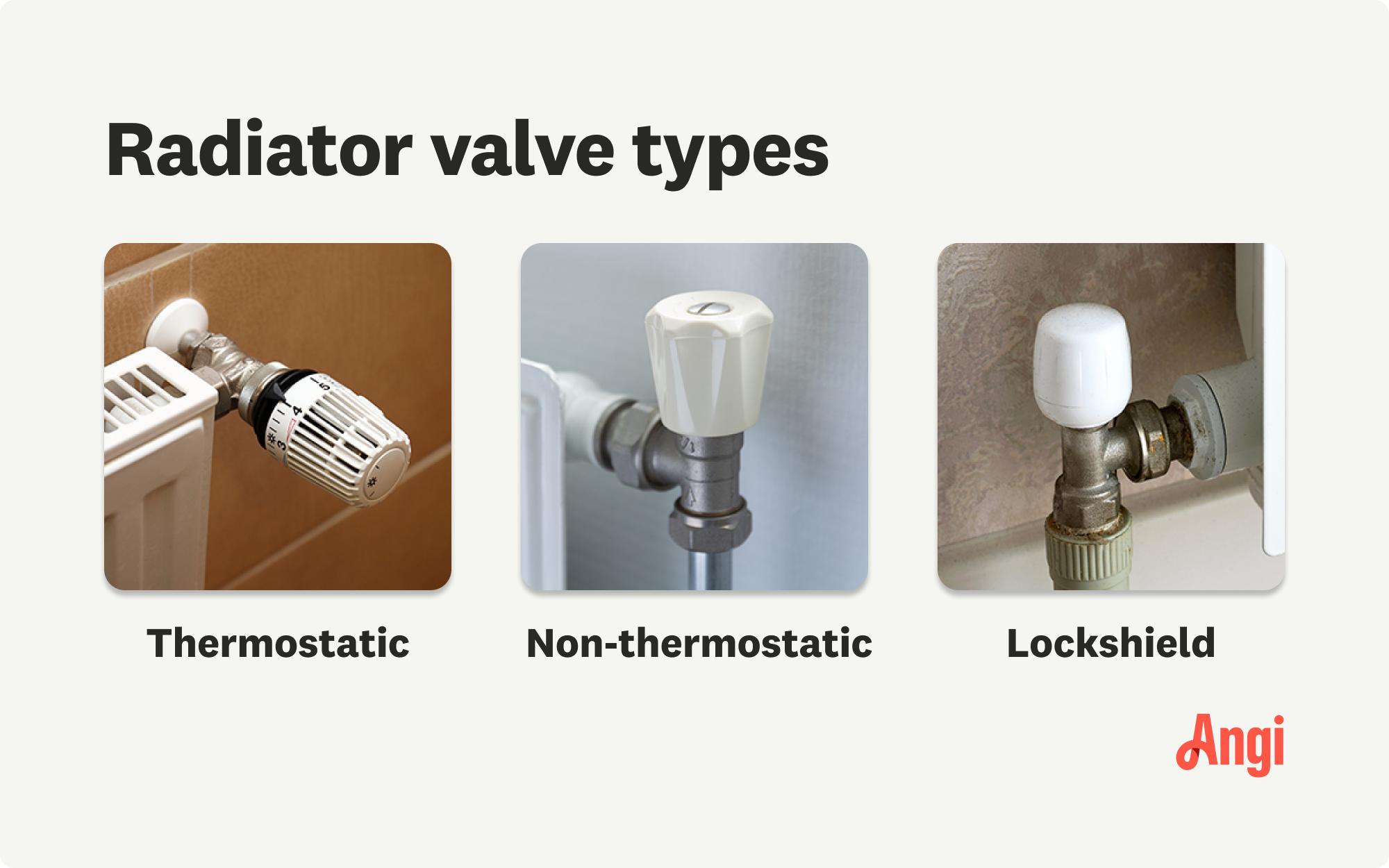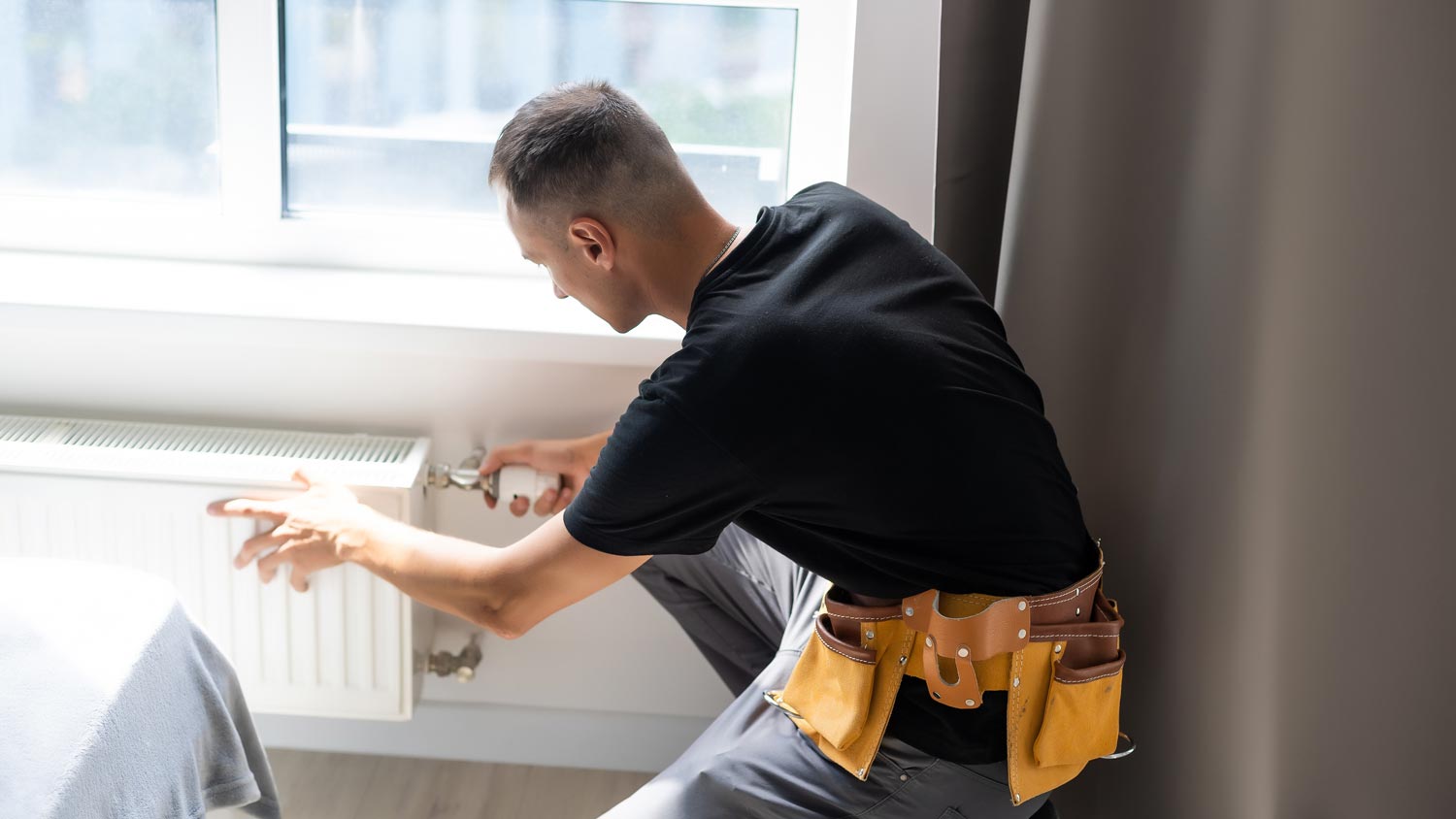
Furnace cleaning is an essential annual chore to keep your home safe. Find out common furnace cleaning costs by type and size of furnace with this guide.
Whether hot water or steam warms your home, this guide’s got you covered


We know they heat our homes, but knowing how to turn off a radiator and how they work can be confusing. Some units use hot water, while others use steam, and the valves and knobs on the side might leave you fearful you’re going to turn the wrong thing off (or on). Don’t worry. Learning how to turn off a radiator or balance one is not as complex as it might seem.

Thermostatic valves are designed to self-regulate the amount of hot water flowing through pipes in your home based on room temperature, meaning you shouldn’t have to adjust them often. But if you need to, you’ll find the radiator shutoff valves (or valve) on the top of your radiator.
In most cases, you’ll be able to choose a setting between 0 and 5. To turn it off, turn the dial to 0. To turn up the heat, turn the dial one number at a time until a desired temperature is reached.

If your radiator doesn’t have a thermostat, then you have a non-thermostatic valve, which is common in older homes. You can usually adjust this by hand. Some may use a numbers system, while others may have a simple dial, located either on top or on the side of your radiator. Clockwise tightens and lowers the heat, while counterclockwise opens the valve and increases it.
Firmly tighten the valve on the side of your radiator until it doesn’t move. Then, open it slightly or as desired. This establishes a baseline with it closed completely (no heat) and allows you to add as much heat to the room as you wish.
Lockshield valves are sometimes found on manual radiator valves now. They control how much water can exit the radiator, which can also help you cool or heat a room. The more open it is, the cooler the room, as hot water won’t stay in the radiator as long.
Look for a valve covered with a plastic cap and tighten or loosen it as needed. Lockshield valves usually come with a key, which you’ll need to put inside the slot underneath the plastic cap.

Repairing a broken radiator costs $100 to $500 on average, so maintaining yours is a savvy way to keep cash in your pocket and keeps you from being stuck on cold winter days with no heat.
You should bleed your radiator of air annually. “Bleeding” means letting all the excess air out of your pipes. Air trapped in the pipes rises to the top of your radiator, resulting in uneven heating. The bleed valve at the top of your radiator should have a hand dial or key you can insert to remove built-up air.
Radiator coolant and other debris can decrease efficiency in your home’s hot water or steam radiator system. Having a professional flush your radiator every five years (or every three years if it’s about seven or more years old) is a good idea.
Dripping water could lead to corrosion and expensive repairs if left untreated. Add looking for leaks to your annual checklist before turning on the heat when cold weather creeps in.
Homeowners can clean their steam radiator with 1 gallon of water mixed with 1 cup of vinegar. Use a sponge or cloth to wipe down the outside to prevent corrosion as it ages. Steam radiators are closed systems, so the inside doesn’t need to be cleaned.
Never install thermostatic valve radiators in rooms where the temperature can fluctuate greatly. Moisture and heat from other appliances can wear down the radiator’s self-regulating mechanisms faster, leading to more frequent repairs. Don’t install a thermostatic valve radiator in rooms with consistently fluctuating temperatures, like bathrooms or laundry rooms.
A heating and cooling specialist can help with your maintenance plan, or you can save money by tackling the tasks yourself (when safe to do so).
From average costs to expert advice, get all the answers you need to get your job done.

Furnace cleaning is an essential annual chore to keep your home safe. Find out common furnace cleaning costs by type and size of furnace with this guide.

When your heat goes out, it can cause a bit of a panic. But knowledge is power, so let's go over radiator repair costs before that happens.

What you’ll pay in Columbus, OH, for furnace repairs depends on many factors. Here’s a breakdown of what can go wrong and the cost to fix those issues.

Tackling unwanted odors from indoor plants can be tricky. Learn how to use a carbon filter in your duct fan to improve air quality.

There are few things more important to homeowners than keeping their AC systems running. Use this guide on AC leak repair to keep your home cool and comfy.

Your return air vent is responsible for removing warmer air, so testing it ensures you keep your environment comfortable and there are no HVAC problems.